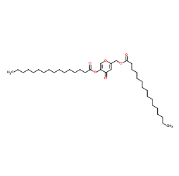Kojic Acid vs. Kojic Acid Dipalmitate: The Battle of the Skin Care Ingredients
the world of skin care, there are many ingredients that claim to have whitening properties. Two popular ingredients that appear frequently in this category are kojic acid and kojic acid dipalmitate. These two ingredients are commonly found in cosmetic whitening additives and are known for their effectiveness in reducing dark spots and hyperpigmentation. However, there are key differences between the two ingredients that can have a significant impact on their overall performance. Let’s take a closer look at kojic acid and kojic acid dipalmitate.
Kojic acid is a natural substance extracted from certain fungi and is known for its skin whitening properties. It works by inhibiting the production of melanin, the pigment that gives our skin its color. By inhibiting the production of melanin, kojic acid can help fade dark spots, reduce the appearance of acne scars, and even even skin tone. Kojic acid is unique in that it has an alkaline pH, which makes kojic acid highly unstable and susceptible to degradation when exposed to heat, light, and air. This means that products containing kojic acid may have a shorter shelf life and require special packaging to maintain their effectiveness.
Kojic acid dipalmitate, on the other hand, is a more stable version of kojic acid. It is made from kojic acid combined with palmitic acid, a fatty acid extracted from palm oil. This combination not only enhances the stability of the ingredient, but also makes it oil-soluble, making it easier to formulate into skin care products. Kojic acid dipalmitate has similar whitening effects to kojic acid, but its stability allows it to be used in a wider range of cosmetic formulations, including creams, lotions, serums, and even makeup products. Additionally, kojic acid dipalmitate is less sensitive than kojic acid, making it a suitable choice for people with sensitive skin.
When choosing between kojic acid and kojic acid dipalmitate, it ultimately comes down to your skin care needs and preferences. If you’re looking for an effective whitening ingredient and prefer products with a shorter shelf life, kojic acid may be a better choice. However, if you value stability and versatility in your skin care routine and want to enjoy the benefits of kojic acid without its drawbacks, then kojic acid dipalmitate may be the perfect choice for you.
In conclusion, both kojic acid and kojic acid dipalmitate are valuable skin care ingredients with whitening properties. While kojic acid is known for its natural and effective skin whitening properties, it is less stable and has a shorter shelf life than kojic acid dipalmitate. Kojic acid dipalmitate, on the other hand, offers similar benefits to kojic acid but with greater stability and versatility in cosmetic formulations. Ultimately, your specific skin care needs and preferences must be considered when choosing between these two ingredients. So go ahead and explore the world of skin care and find the perfect product for you to help you achieve a brighter, more even-toned complexion.
Post time: Sep-26-2023



